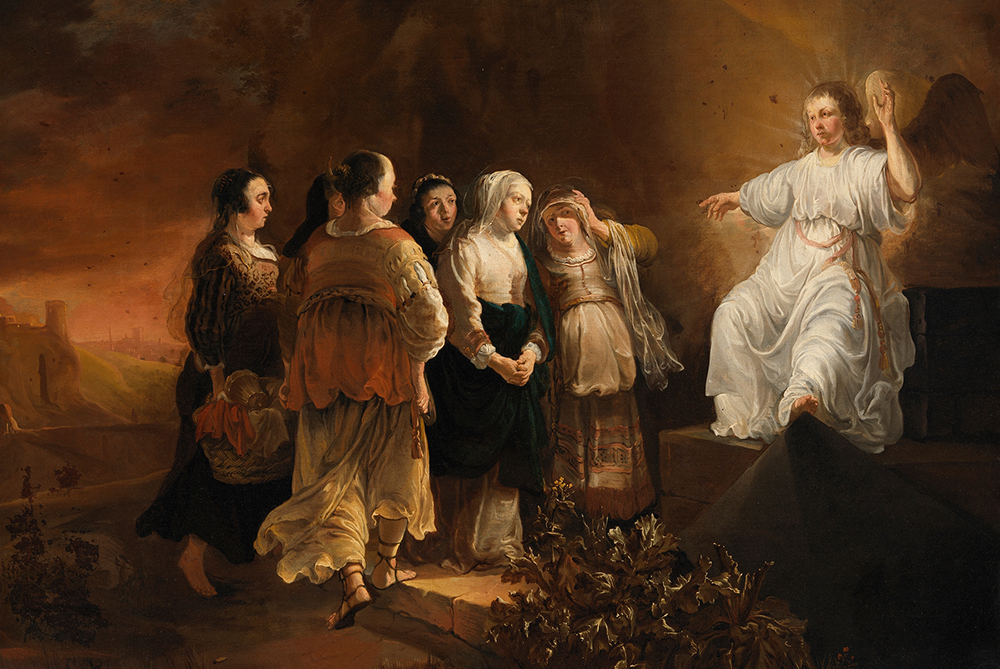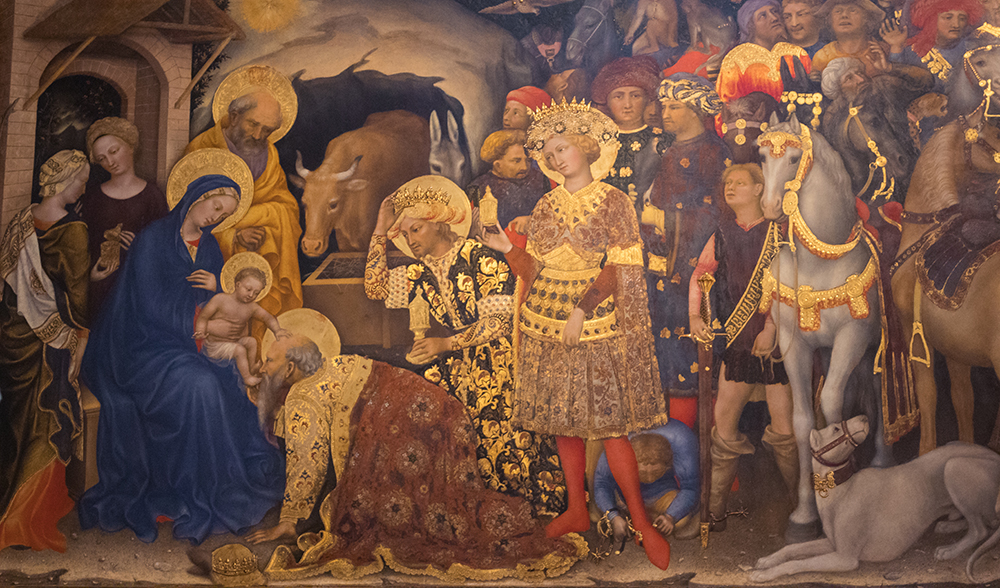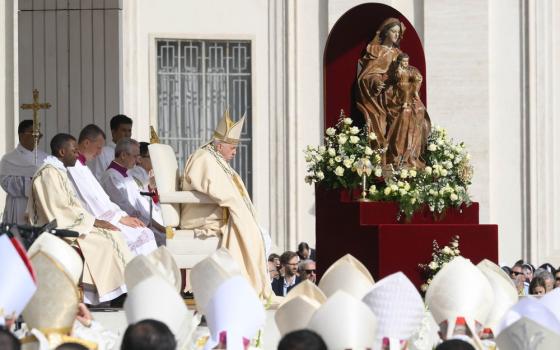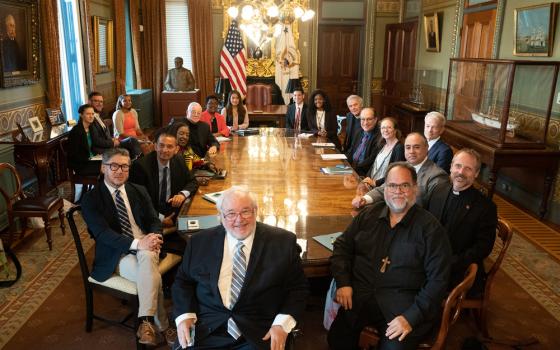
"The Holy Women at the Tomb" by Dutch painter Jan Baptist Weenix (Artvee)
Local churches in Asia are in great need of peace amidst challenges faced in our multireligious and multicultural contexts. The haunting memory of the 2008 persecution and displacement of tens of thousands of Christians in Kandhamal lingers not only in that region but also in other places.
Hence, I felt hopeful when the Federation of Asian Bishops' Conferences released its Bangkok Document in March, titled "Journeying Together as Peoples of Asia … 'and they went a different way' (Matthew 2:12)." This document advocates for renewal through discernment of new pathways. Meditating on the words, "a different way" from this Gospel verse, has given me a lot to reflect on.
To begin with, I feel amazed how the prophet Micah (5:2) points to the birth of Jesus: "O Bethlehem Ephrathah, who are little to be among the clans of Judah, from you shall come forth for me one who is to be the ruler of Israel." So, too, the Magi from the east see his star rising and follow it — journeying all the way to Judea in search of him (Matthew 2:1-2). As the news of their arrival spreads, King Herod feels threatened and calls them in secret to gather more info, asking them to report to him with good news after they've found him and share the location so he, too, can worship the newborn Messiah. I wonder why he doesn't send spies to follow them instead!
Advertisement
Anyway, to his great shock, the wise visitors bypass him by taking "a different route" back home after being warned in a dream not to return to him (Matthew 2:3-12). Of course, they don't have smartphones and internet to use GPS or have their location tracked by the local authorities. They do seem well-connected with the divine, though. Not only the Magi but even Joseph is instructed in a dream to flee with his family from Herod by taking "a different route" leading to Egypt instead of his hometown (Matthew 2:13). The massacre of innocent infants that follows is harrowing:
A voice was heard in Ramah,
sobbing and loud lamentation;
Rachel weeping for her children,
and she would not be consoled,
since they were no more (Matthew 2:18).
Pondering deeper on these biblical passages, I realize that the baby boy's life is in danger even while he's asleep or crying in that humble manger in Bethlehem. The familiar Christmas crib with the little one wrapped in swaddling clothes (Luke 2:7) and the wise visitors offering him gifts of gold, frankincense and myrrh (Matthew 2:11) reminds me of a parallel Holy Week scene when Jesus is wrapped and buried in a tomb after his early death as a young man (Matthew 27:59-61), and the wise women go to anoint his body with spices (Mark 16:1-2) because both myrrh and spices are used for embalming bodies after death.
These infancy and Resurrection narratives in the Gospel of Matthew seem like a sandwich with a deeper message. Jesus is very special to the wise men (Magi) and the wise women as they search for him. They seem to have similar personalities and sense of discernment. Both see Jesus and worship him. Both receive instructions regarding the direction in which they must journey because of the possibility of attacks by enemies of the Messiah (Matthew 2:11-12; 28:9-10).

"The Adoration of the Magi," by Italian painter Gentile da Fabriano. The painting is housed in the Uffizi Gallery, Galleria degli Uffizi, in Florence, Tuscany, Italy. (Dreamstime/Gianni Tonazzini)
Hereafter, the Magi return to their gentile nations, Joseph is further guided to move to Galilee, a land of the gentiles (after returning from Egypt) and, after the Resurrection, the apostles too are directed (away from Jerusalem) to Galilee where they had first encountered Jesus and will receive the great commission to reach out to all the nations (Matthew 28:16-20).
However, compared to the Gospels of Luke (2:7) and Mark (16:1-2), Matthew paradoxically fails to mention wrapping with clothes in the infancy narrative but includes them in the death and Resurrection narrative and omits myrrh in the death and Resurrection narrative while including it in the story of his infancy. What is his intention? Perhaps he is subtly pointing to a connection between these two phases of Jesus' life for a community going through a crisis, as it is becoming increasingly gentile in its membership because of the rejection of Jesus by the Jews.
Throughout Matthew's Gospel, the apostle emphasizes the divinity of Jesus Christ and the importance of not losing the Jewish traditions. By inserting the infancy details about the quest of the Magi from gentile territories of the east, which mirror the events at his death and Resurrection, Matthew not only wants to show that Jesus is the Messiah prophesied in the Old Testament but wants to convey that the people of other nations have also been awaiting the coming of Jesus Christ. He uses midrash in the infancy narratives, which have a close resemblance to incarnation stories found in various other religious traditions of the east and west.
Jesus is very special to the wise men (Magi) and the wise women as they search for him. They seem to have similar personalities and sense of discernment. Both see Jesus and worship him.
In the context of increasing intolerance between various religions, I strongly feel that we as Christians and persons in consecrated life, especially missionaries, need to introspect and find "a different way" of seeing various religions in relation to our own.
Moreover, since colonialism of the past has left deep wounds on the psyche of our country, we desperately need to develop a postcolonial theology that respects the ray of truth in various other religions — as also mentioned in Nostra Aetate, a declaration of the Second Vatican Council. Unfortunately, ideological polarization within the church all over the world is making certain sections of the local Christian community seem to be part of the problem of fundamentalism and communalism rather than part of the solution to peace and the reign of God.
That said, somehow, I've never been able to separate the meanings of Christmas-Epiphany and Holy Week narratives in the Bible. One always reminds me of the other. Both bear the mystery of suffering and God's intervention, which offer courage and hope during ordinary times of the liturgical year as well as our personal moments of crisis.
Thus, Matthew, the apostle, tries to show that the community is trying its best not to break from Judaism but is justified in doing so as it widens the horizon of its mission to communicate the Gospel to include the gentiles. In this endeavor, he offers assurance that Jesus is always with the suffering disciples and to the end of the age (Matthew 28:20).





